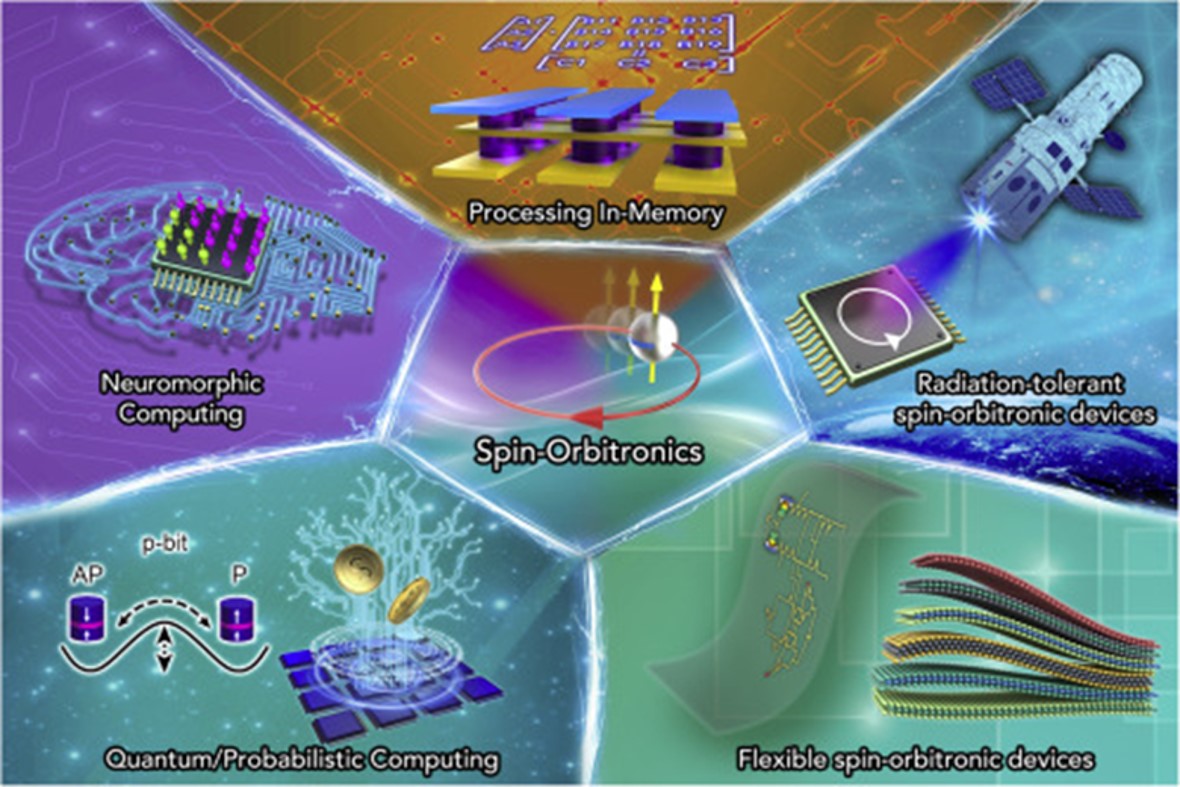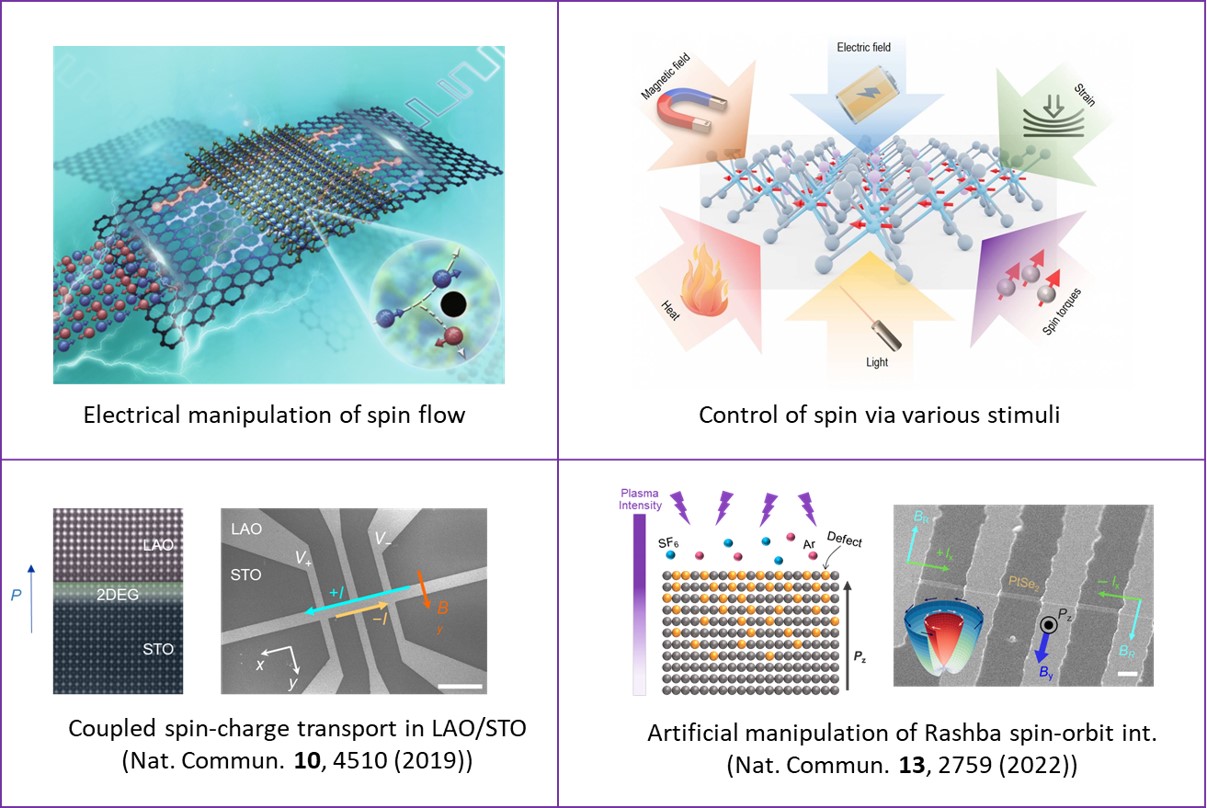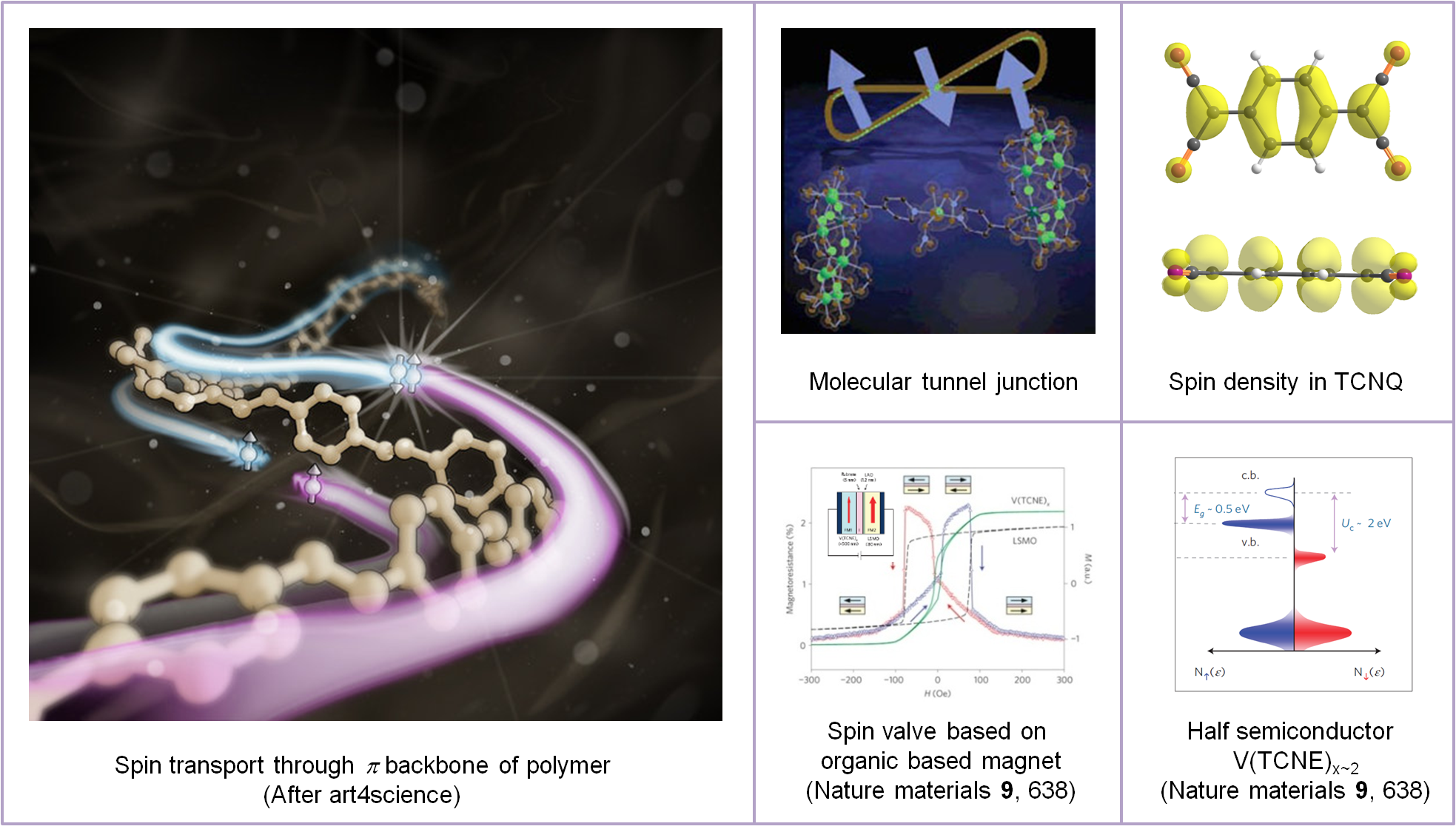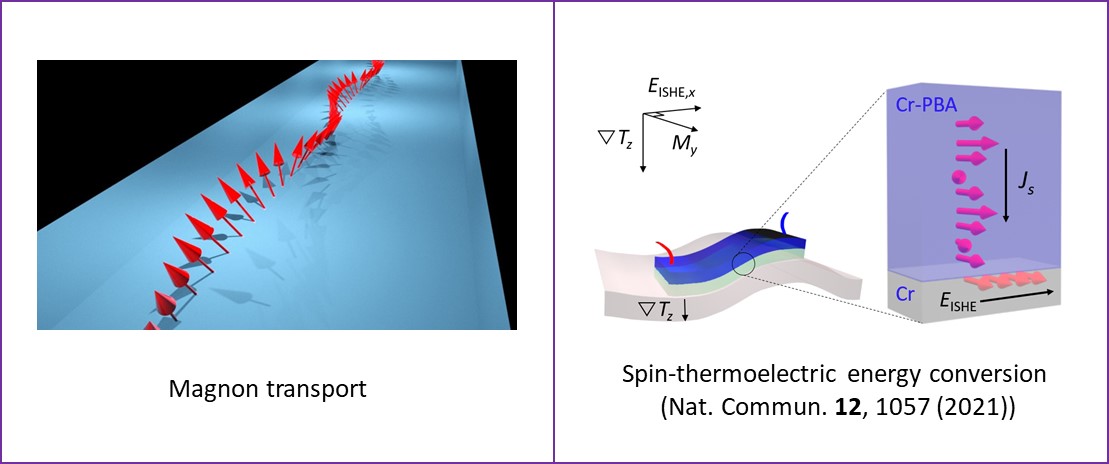1. Introduction
2. Spintronics
3. Development of new concept of spin-based memory and logic device
4. Control of spin current in 2D materials
5. Organic and molecular spintronics
6. Spin-thermoelectrics
1. Introduction
Our research focuses on developing future neuromorphic semiconductor device by implementing the control of electron's spin in addition to its charge pursuing ultrafast energy-efficient spintronic device. Based-on the electrical signals associated with spin transport, scattering, and dynamics in low-dimensional system, hybrid thin film and interfaces, we are pioneering new concepts of logic and memory devices that will be essential ingredients in future AI computing technology.
2. Spintronics
Spintronics is an area of research that explores spin degree of freedom in electronic applications, which have been stimulated by the prospect of a new paradigm of electronics. The distinguishing and manipulating "spin" as well as the charge properties of electrons add a new dimension to the conventional electronics. The perspective of spintronics has limitless concepts of novel solid-state electronic devices.

3. Development of new concept of spin-based memory and logic device
The principles of CMOS operation, involving a switchable semiconductor conductance controlled by an insulating gate, have remained largely unchanged, even as transistors are miniaturized to sizes of 10 nanometres. New scalable logic technology beyond CMOS should provide improvements in efficiency and performance for von Neumann architectures and enable growth in emerging computing such as artifical intelligence. Such a computing technology needs to allow progressive miniaturization, reduce switching energy, improve device interconnection and provide a complete logic and memory family, which has been main goal in our research via developing new concept of spin-based memory and logic device.

4. Control of Spin Current in 2D Materials
2D materials, such as graphene and various TMDCs, are promising platform to exploit spin channel owing to versatile integration of intrinsic properties involved with spin and charge flow and their interconversion. Perhaps, what make them to be most attractive for spintronics could be gate-tunability of physical properties associated with spin-electronics, such as carrier concentration, electronic mobility, spin diffusion, Rashba spin-orbit interaction, spin-charge interconversion, etc. In the past decade, there have been many significant advances in exploiting spin currents in 2D materials, including efficient, defect-induced magnetism, theoretical understanding of the intrinsic and extrinsic spin-orbit coupling, and the investigation of the spin-charge conversion. Control of spin flow in 2D materials have been one of the main theme in our research.

5. Organic and molecular spintronics
Organic spintronics is a hybrid of two hot fields: organic electronics and spintronics. With the possibility of creating unique molecular system from a bottom-up approach, the field opened up vast opportunities for discovering new fundamental phenomena. The ability to manipulate electron spin in organic molecular materials offers a new and extremely tantalizing route towards spin electronics, both from fundamental and technological points of view. This is mainly due to the unquestionable advantage of weak spin?orbit and hyperfine interactions in organic molecules, which leads to the possibility of preserving spin-coherence over times and distances much longer than in conventional metals or semiconductors.

6. Spin-thermoelectrics
Spin-thermoelectrics (STE), an emerging generation of TE technologies, converts perpendicular heat flux into longitudinal electric power through the combination of the spin Seebeck effect and the inverse spin Hall effect in a ferromagnet/heavy metal bilayer. This orthogonal relationship between heat and charge flow in different mediums allows to control the thermal conductivity of magnetic insulator and the electric conductivity of heavy metal, independently. Moreover, the STE device is readily scalable by simply extending the area of a bilayer film. Our group is working on developing new magnetic materials, suitable for scalable film deposition and practical applications and magnon transport therein.
